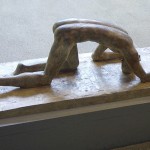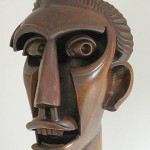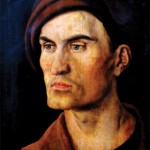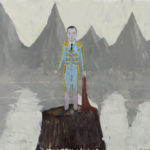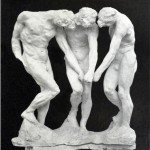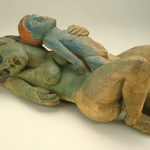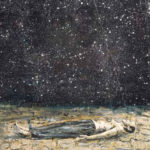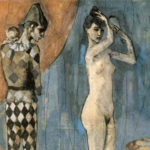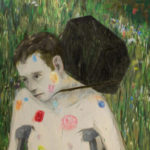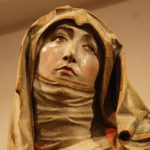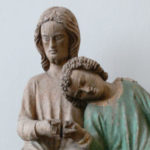This sculpture by the Swiss artist Hermann Scherer (1893-1927) is titled “Sleeping Woman with Boy” and was part of a wonderful exhibit on German Expressionist Sculpture at the Los Angeles County Museum of Art in 1984. That is, over 30 years ago. I’d originally driven to the museum to see another show which was, to my taste, so dominated by multiple pop-up gift shops and flooded with such souvenir paraphernalia that I just left, unable to be with the work. I stumbled into this exhibit as onto an oasis. As I came upon Christoph Voll’s life-size “Nude, Ecce Homo” I heard a very young girl, perhaps not yet five years old, ask her mother, “Can we just sit?” She stared at that sculpture, without talking, for about 8 minutes. I began to time her.
I think it is unfortunate to consider children incapable of taking in great art, or needing an introduction to it. Perhaps, we are equipped from infancy with a sense for the real, for the truth of things. Perhaps it is this exact inborn sense that is more pro-survival than any of our other extraordinary gifts.
As I was writing This Is Why I Came I began to read the book of Leviticus, a not so popular book in the Bible, partly because I thought maybe I never had. It was an eye-opener and I thought, gads! God is manic here. This voice giving hundreds of stipulations about property, marriage, divorce, worship, a flood of details all specific and non-stop! I began to imagine this God of Leviticus as breathless, ecstatic maybe.
As if experiencing what the late poet Seamus Heaney describes as, “The excitement of finding oneself suddenly at full tilt on the right path.” That rush. As, when lucky, we find ourselves, as writers, composers, mathematicians and architects, working “in the kernel”, as we say!
I also began to wonder why what would later be organized and codified into the Mosaic Law was portrayed in this way. I liked the idea of the Law coming in a sort of crazy dream, unceasing and frantic, and one so intimate, spoken to Moses who was alone, is depicted alone, and without any control. I started to imagine him struggling to stay awake, his mind alert. And I wondered how that could be. I mean, if we take the story just as it is, which I like to do, then how did Moses ever manage? And he would want to “manage” because this wasn’t any voice, but the voice of God himself.
With Scherer’s “Sleeping Woman with Boy”, I found an image. It made me think of memory. That Moses could have such a memory and that it could be a still place in that torrential rush of words that did not stop. Perhaps a first memory. The rise and fall of the water under the woven basket where his mother had placed him, setting him gently in the river. A sense of being held. That, perhaps, we all have a first memory, good or bad, and that it stays with us in its peculiarity and force, as here, how Scherer gives to this male child resting on the stomach of his mother, these unusual greens and blues and reds.
By now that young girl I saw decades ago would be in her mid-30’s. Perhaps she frequents art museums and takes a child of her own? Perhaps she is an artist? Perhaps she studied the same now-ancient Law of Moses and is a rabbi leading her own congregation? Perhaps she is in another sort of work entirely? Perhaps she helps others with their memories? I do not know.
Note:
Hermann A. Scherer’s “Sleeping Woman with Boy,” 1926 by THE ALTERPENGUIN SUPERDORK is licensed under CC BY 2.0 / desaturated from original




